An interview with Walla Walla artist Todd Telander, whose landscapes radiate dreamy tonality
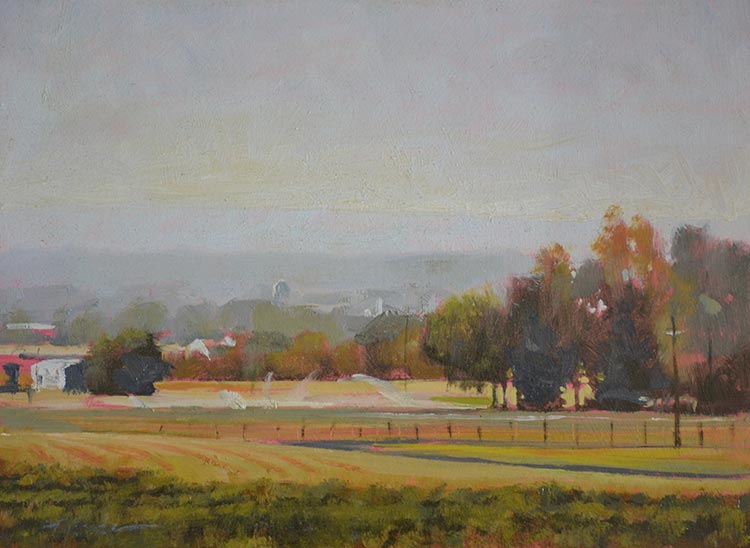
EARLY in his career, artist Todd Telander spent years as a scientific illustrator, an exacting profession. His admiration of American abstract expressionism and French impressionism led him to eventually explore other realms of the visual arts. His most current work focuses on oil landscape paintings, but the versatile Telander maintains a long queue of commercial jobs as well, including illustrating field guides and designing wine labels. Telander and his wife, Kirsten, operate their own art gallery in downtown Walla Walla. Aside from the gallery, his work is on display around the town including the “tasting room hallway” at the popular Marcus Whitman Hotel.
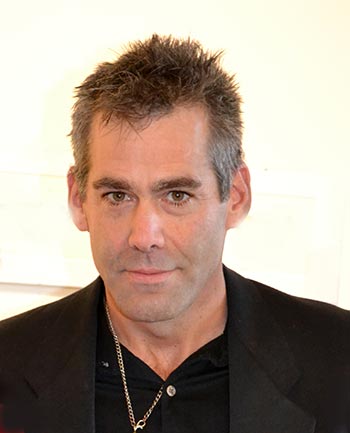
Your oil landscapes capture a sense of nature’s serenity and calm. Can you talk about where this originates?
I paint things that inspire me, that I have some kind of reaction to, and things that I want to look at. I am a fairly calm person by nature; so calm scenes are mostly what I react to. From an analytical standpoint, it is interesting that I would choose landscape as my central focus, as landscape is built mainly upon layers of horizontal shapes which (in contrast to verticals and diagonals) are known to induce a stable, peaceful effect.
How would you describe your regular landscape style versus your minimalist style, and what are you hoping to convey or capture in each.
My career began with tight realism. I was a scientific illustrator and my clients demanded pinpoint accuracy. After many years of this, I really wanted to explore other aspects of the visual arts, so I experimented in expressionism and abstraction. I love the work of the American abstract expressionists and the French impressionists, and modeled some of my experiments after them. Eventually, I came to a place somewhere in between, where the subject is recognizable but not overly rendered. So, both forms of my landscapes, the regular or minimalist, are just degrees on this spectrum. In my minimalist work I aim for more subtlety and suggestion, giving more room for the viewer to make their own choices about what the painting is. With the traditional landscapes, the objects are more clearly defined, there is more reference to particular places and events, and the viewer can enjoy this specific sense of place and their memory of it.
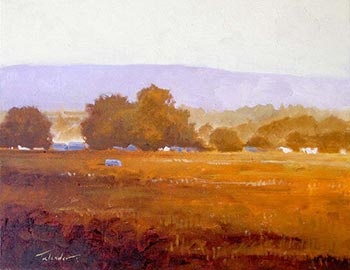
Did you have a particular artistic influencer of note?
There have been countless influencers. The Canadian wildlife artist Robert Bateman was my first. He showed me that accuracy in painting could be embedded in a rich abstract design, and that a few expressive brush strokes could mean more than a thousand tiny ones. As I mentioned earlier, I love the abstract expressionists, particularly Rothko, Motherwell, and Hoffmann. In their work I began to understand how art is a vehicle to evoke emotion — that stripping away any reference to nature emphasizes the painting as a powerful, physical thing in itself. I love artists who carry over abstract ideas into representation paintings, such as Giorgio Morandi (in the still life genre) and Andrew Wyeth (in landscape and portraiture). Lately, the tonalist painters heavily influence my landscapes, particularly George Inness who achieved a poetic, mystical quality in his later work.
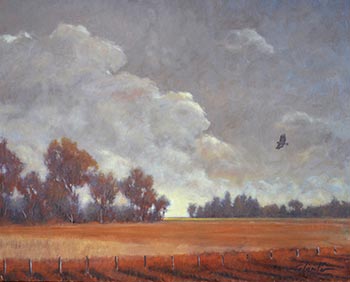
When did you first start painting Walla Walla Valley landscapes (and vineyards)?
I first saw Walla Walla about eleven years ago when my family and I were on a trip to Othello where I was teaching at a birding festival. I was immediately fascinated by the landscape — mountains, pastures, trees, sky — and began painting the scenery even before we decided to move here. The landscape has been my muse ever since. The colors change dramatically with the seasons, so nothing ever looks the same. The vineyards, too, moving from violet winter twigs to grass green summer clumps to red-orange fall stripes, are a joy to observe.
Do you feel a special connection to the wine world?
One can’t live here and not be influenced by the wine industry. In fact, Kirsten began working at a winery, then writing about wine, which supported our family enough for us to live here. She taught me a lot about wine and wine culture, and introduced me to many of the region’s finest winemakers. I have been fortunate to have these associations, because in addition to enjoying beautiful wines I have painted their vineyards, designed wine labels, shown work in their tasting rooms, and made some great friends. I am also grateful to the people who come into Walla Walla to experience our wines, as they are often very appreciative of the arts and help to support the growing diversity of this town.
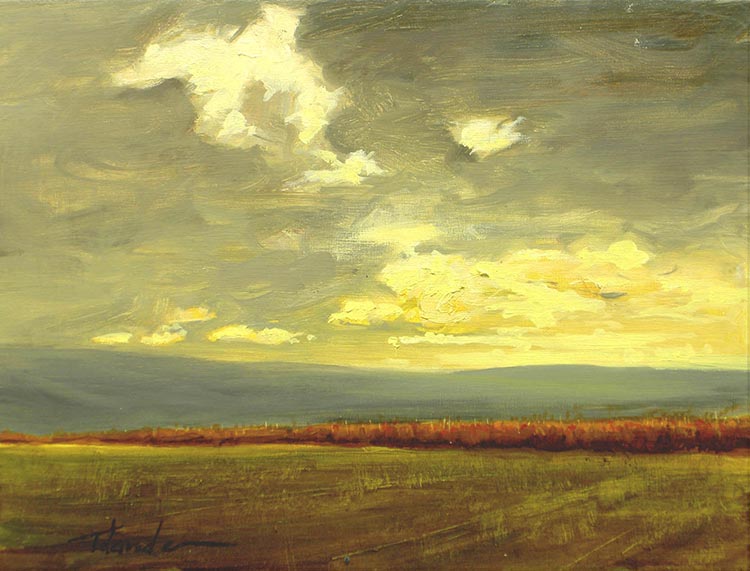
You are versed in multiple mediums. Do you prefer one in particular?
Working in a variety of mediums provides a variety of learning experiences, and the more learning experiences I can get the better my work becomes. I have worked in watercolor, acrylic, oil, pastel, ink, encaustic, and sculpture. My preferred medium at the moment is oil. It is versatile, malleable, rich looking, and traditional. It’s fun to think that I can paint with essentially the exact same materials that the masters of the Renaissance used 600 years ago.
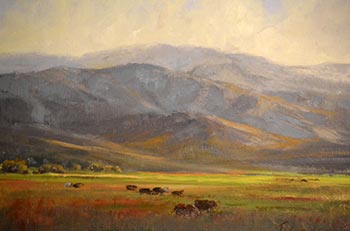
How has your painting style evolved over your career?
As I mentioned, my early work was scientific illustration, which naturally led to wildlife art, which incorporated the landscape with animals. Then came years of portraits, still lifes, and abstraction, a rather restless time in my life where I wanted to experience everything. My latest work really focuses on landscape, but I enjoy mixing it up to keep things fresh. I usually have commercial illustration jobs going on as well, such as illustrating field guides, designing wine labels, T-shirt designs, or displays for natural history museums. I have been fortunate to work for clients throughout North America and into Canada, England, and Paraguay. Once in a while at our gallery I take a few hours to draw charcoal portraits by appointment.
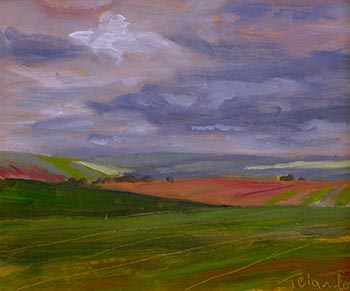
It sounds like you enjoy teaching art, too.
I run my own private art school in my home studio, which gives me a chance to pass-on concepts and techniques in drawing and painting that I have learned over the years. I work with students of all abilities, from complete beginners to professionals, and all ages, from 8 years to 90. We learn still life, landscape, and portraiture and my students use any medium they like.
What do you enjoy doing when not painting?
I always enjoy being outdoors, experiencing the landscape and wildlife firsthand, by running, hiking, or cycling. Our family takes regular camping trips to the nearby Blue Mountains and the Wallowa Mountains of Eastern Oregon. I get a lot of painting ideas from these journeys. Cooking and gardening are other things I enjoy. Everything grows so well in Walla Walla because of the rich soils, sunshine, and abundant water.
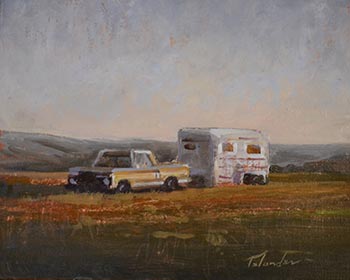
Where can readers find your paintings and what is the best way for them to contact you?
My wife and I opened our own art gallery, Telander Gallery, in downtown Walla Walla. We also have a website, www.telandergallery.com, and a Facebook page, where one can see current work as well as past work. I do a lot of paintings on commission for custom projects or for interior designers. The popular Bacon & Eggs restaurant in Walla Walla has generously given me a “Telander wall” where I will rotate art quarterly. I also show my work in the tastings room hallway at the Marcus Whitman Hotel.
— Interview by John Vitale
Visit the Gallery
Telander Gallery
34 S. Colville St., Walla Walla, WA
Ph: 509-540-2555
www.telandergallery.com
